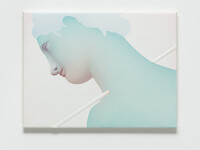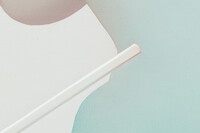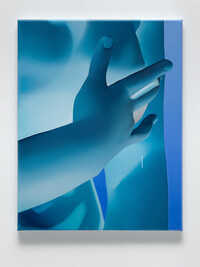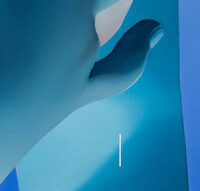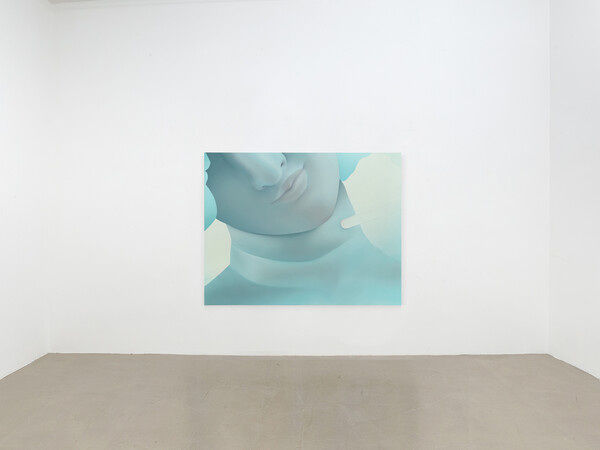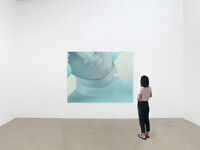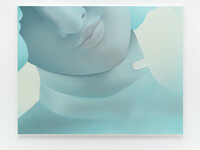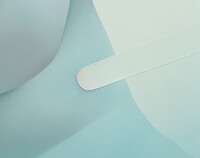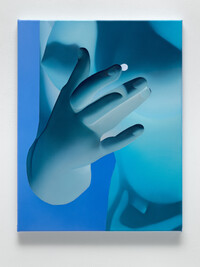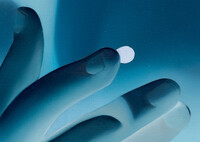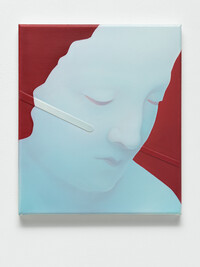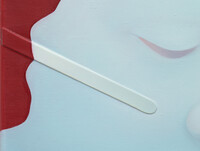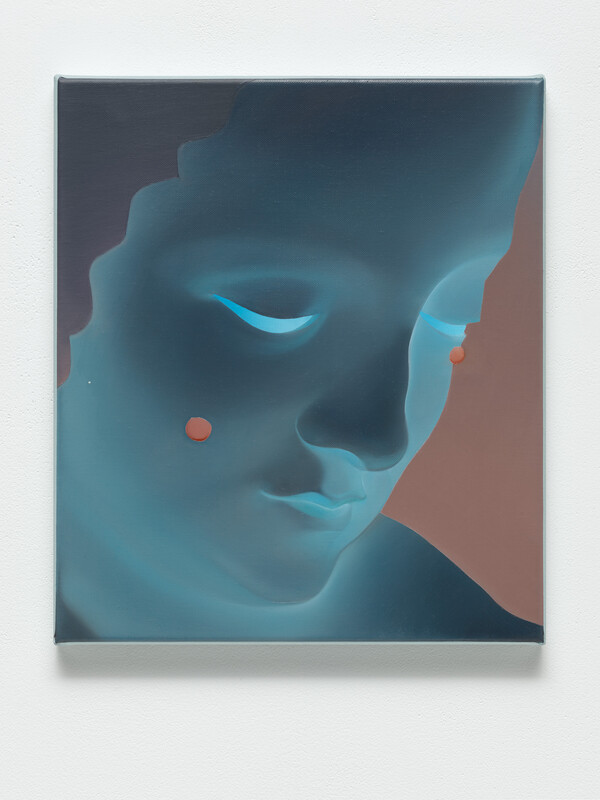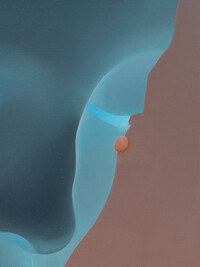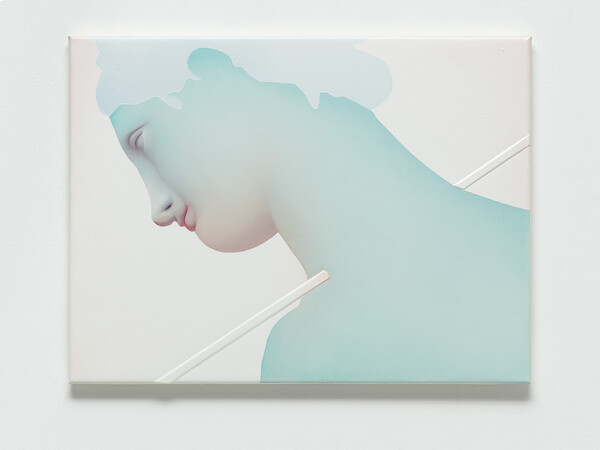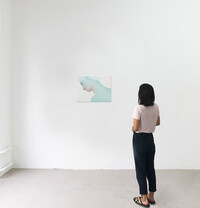My paintings are clearly influenced by surfing and streaming through the internet. It’s already part of my genuine reality. But I see myself more as a time traveller or even as an atemporal person. The loss of time creates an endless space. I like to be in this space.
Vivian Greven
_______o
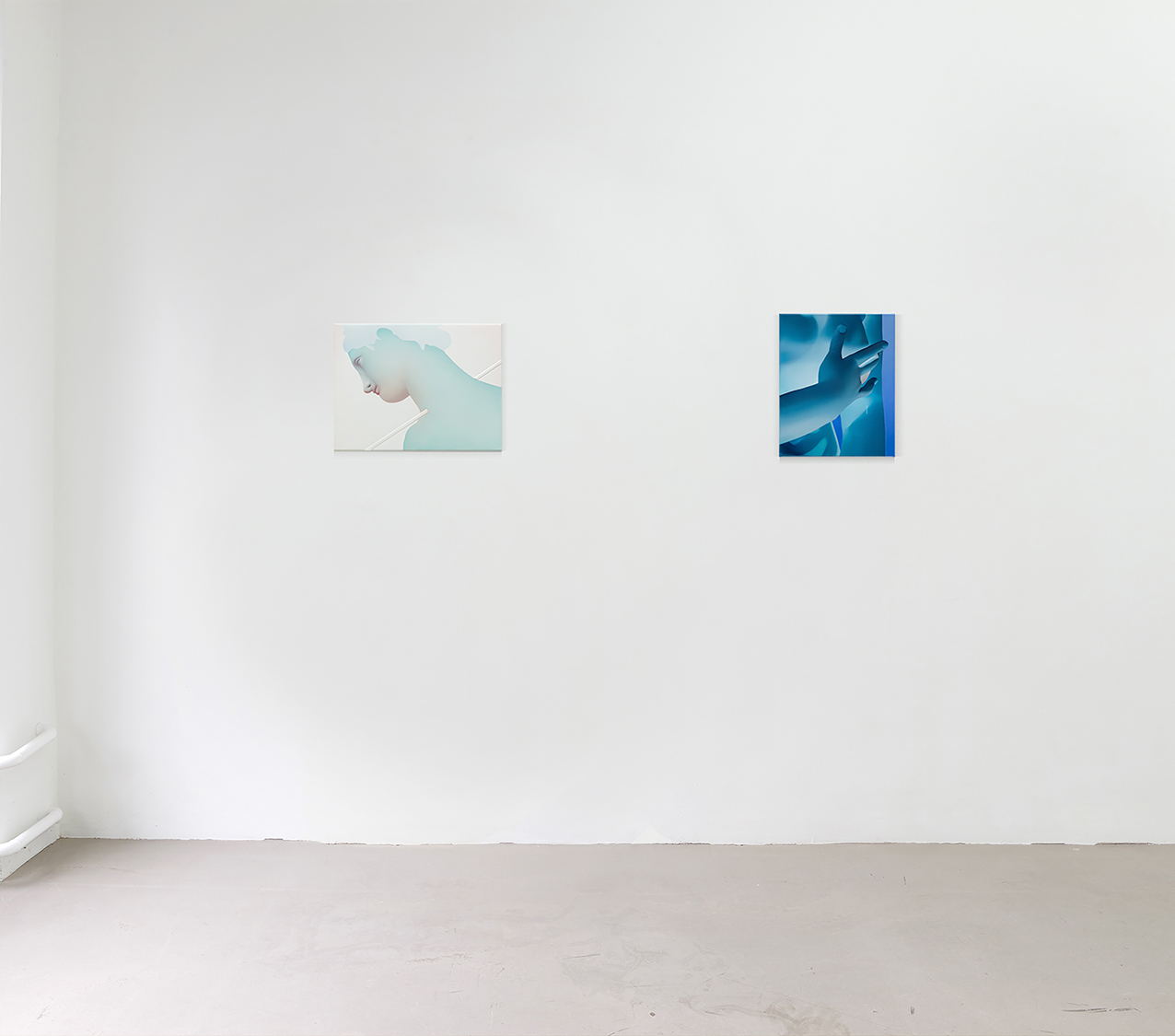
Vivian Greven
Ham II, 2020
oil and acrylic on canvas
155 x 200 cm
Vivian Greven’s painting is based on an adept play with various notion of bodies, being and representation, with concepts of classical antiquity merging with pop art and digital image worlds. Vivian Greven’s painting is characteristic of our present times, which are shaped by the internet and social media and thus dissolve the hierarchies between original, reproduction and simulation.
Vivian Greven´s new body of work is in reference to art historical motifs and popular cultural story telling with the motif of an apple and a classisist female sculpture holding an apple. Is it maybe Venus? Maybe Eva? Maybe Snow White? The motifs create a cascade of possible meanings by playing with our collective memory. The complexity is emphasized by a very fine and elaborated play of the paintings between „real“ space created by relief parts, the painted illusion of sculptural space and visual „cut-outs“ that create a view on the factual background of a painting. The aesthetic of her pictures vacillates between the vocabulary of physical painting and the ethereal illusion of LCD windows.
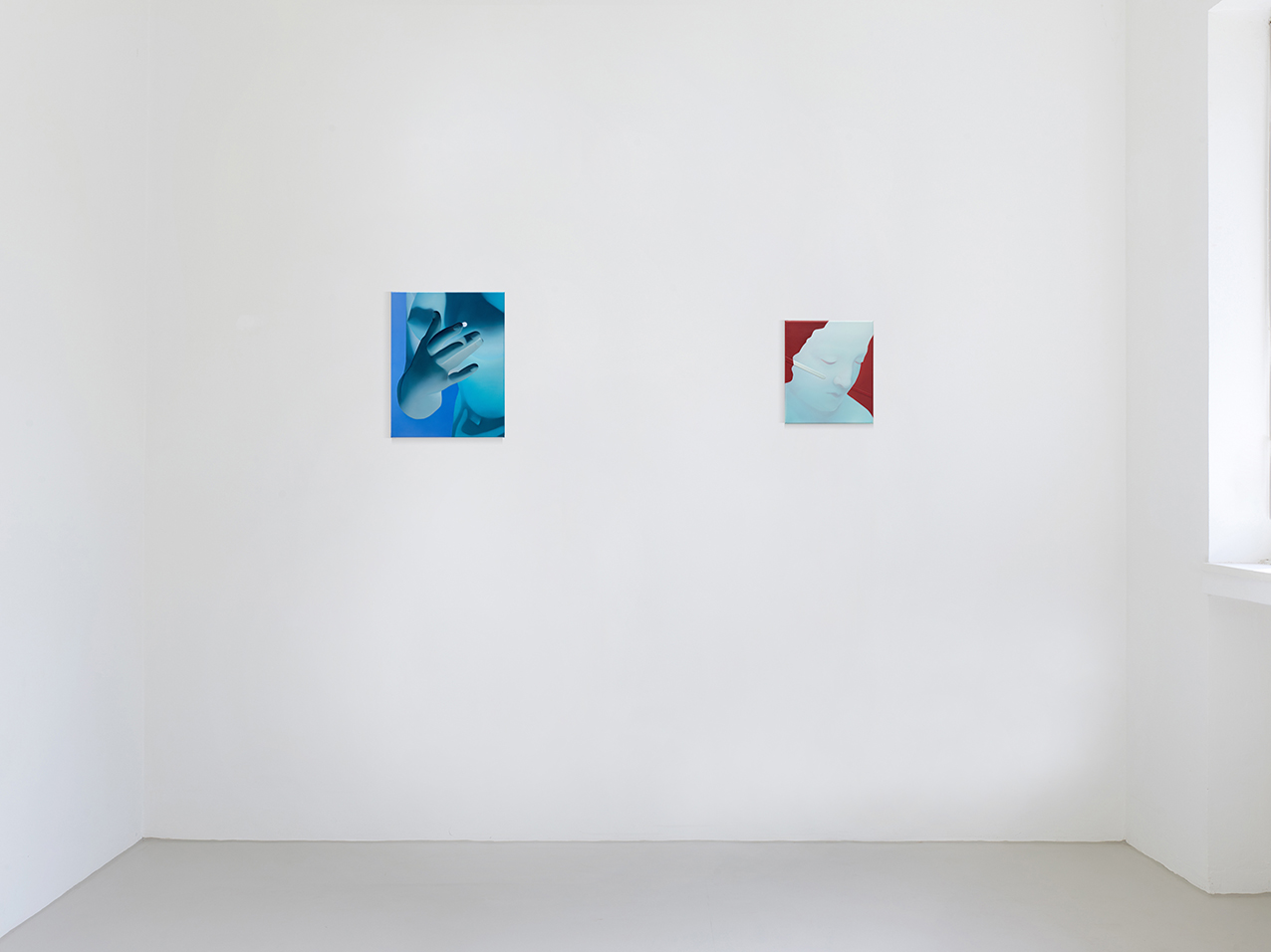
Vivian Greven
Judit II, 2020
oil and acrylic on canvas
35 x 30 cm
Vivian Greven
Ham I, 2020
oil and acrylic on canvas
45 x 60 cm
Your groups of works and motifs are frequently based on mythological narrations that are firmly anchored in collective memory, like Amor and Psyche or Venus. Out of what did your new works evolve, and what role do reliefs and cut-outs play in your painting?
My new paintings started from a female sculpture, that is holding an apple in her right hand. A Venus? An Eva? I don’t know exactly, but my associations started to flow freely. I liked that and my intuition showed me that I could explore that realm deeper. So I started to dig in this pictorial world. Now arrows are appearing. Wilhelm Tell? Yes, the arrow needs to shoot the apple. Apple? A bitten apple. Snow White? Snow White is poisoned. A little piece of apple is stuck. A lump in her throat. Adam’s apple without words.
Then the first images emerge - zooms on certain parts of the body, in which the shape of an apple is rediscovered, or sticks that extend into or protrude from bodies, or just holes in the flawless surface. Reliefs for example can emphasize the illusion of an apple underneath the skin, so that the canvas stretches towards the viewer in the shape of an apple. Or literally, a penetration in form of a Cutout. I am interested in getting to the bottom of these free associative thoughts and emotions by all available means of painting. How far can I trust in the collective understanding of images. When does a spot become a hole - an open wound - interpreted by the collective consciousness, because on the canvas its still a spot. I am interested in the coherences of being human, psychologically, physiologically and spiritually. How did we become, who we are? How do stories, mythologies and images deal as archetypical junctions, that demonstrate the connection of everything - timeless as well as placeless.
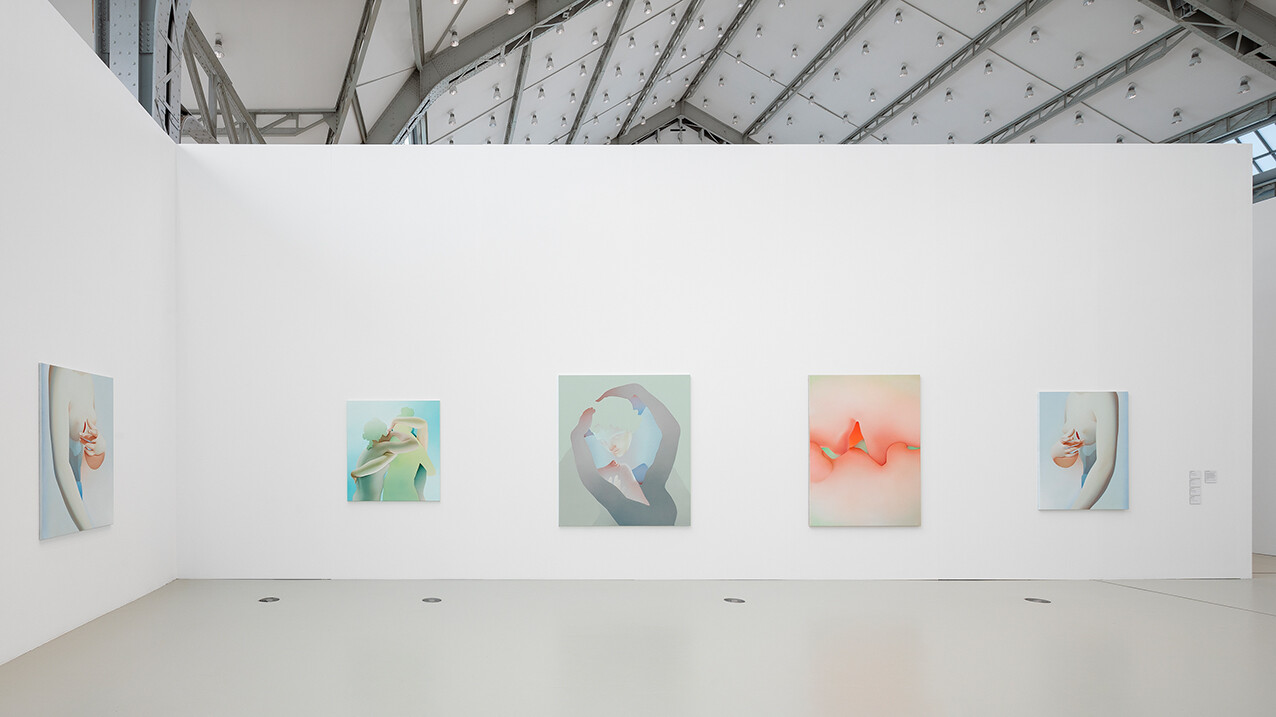
installation view „Now! Painting in Germany Today“, Deichtorhallen, Hamburg, Germany, 2020
In your painting, concepts of classical antiquity, Pop Art and digital image worlds appear to “merge.” Which contents of these different cultural epochs are crucial for your work and for you as a painter born in 1985?
They say about my generation we would be the first digital natives. In fact, this is not correct and I very well remember a time before the smartphone became my alter ego. It is this transition which left a defining impression on me. Like an inner predetermined breaking point. I feel a bit as if my life would be a black and whit movie in which the actors become real, tangible and colorful only to pixelize again. The research of this predetermined breaking point is really interesting to me. It’s a place where everything is possible. A place where time looses its chronological causality. It’s a fertile ground for me as an artist from which I can freely, analytically and playfully observe how everything is connected. Thus, explicit contents of certain cultural epochs are less interesting to me than what the overarching coherences through all times can tell me about human kind.
In art criticism, your painting is often associated with the “post-internet” generation. But at the same time, your motifs are based on depictions of intimate gestures, human interactions and body parts. Is this concept relevant for you, and what is the significance of corporeality and communication in your work?
The term does not have a certain relevance for me, although I can understand the classification of my work as „post-internet“ generation from a contemporary point of view. My paintings are clearly influenced by surfing and streaming through the internet. It’s already part of my genuine reality. But I see myself more as a time traveller or even as an atemporal person. The loss of time creates an endless space. I like to be in this space. I think time is a fiction, an invention to hold everything in check. The representation of proximity and intimacy act as opponents. In closeness every fossilization will finally start to dissolve. Like ice, which starts melting. I am interested in these conditions and their transitions - Water, which becomes ice when it’s cold, or gas when it’s hot. Metamorphosis. It shows me how flawed our solid and frozen concept of reality are. Consequently, I understand my work as a communicator of intermediate states. As if I could create an endless space on the canvas, in which we can observe how ice turns into fluid water. Only too well do I know from own experience how it feels when a frozen emotion finally starts to flow and thus melts into thin air again. I wonder who will breathe in that air.
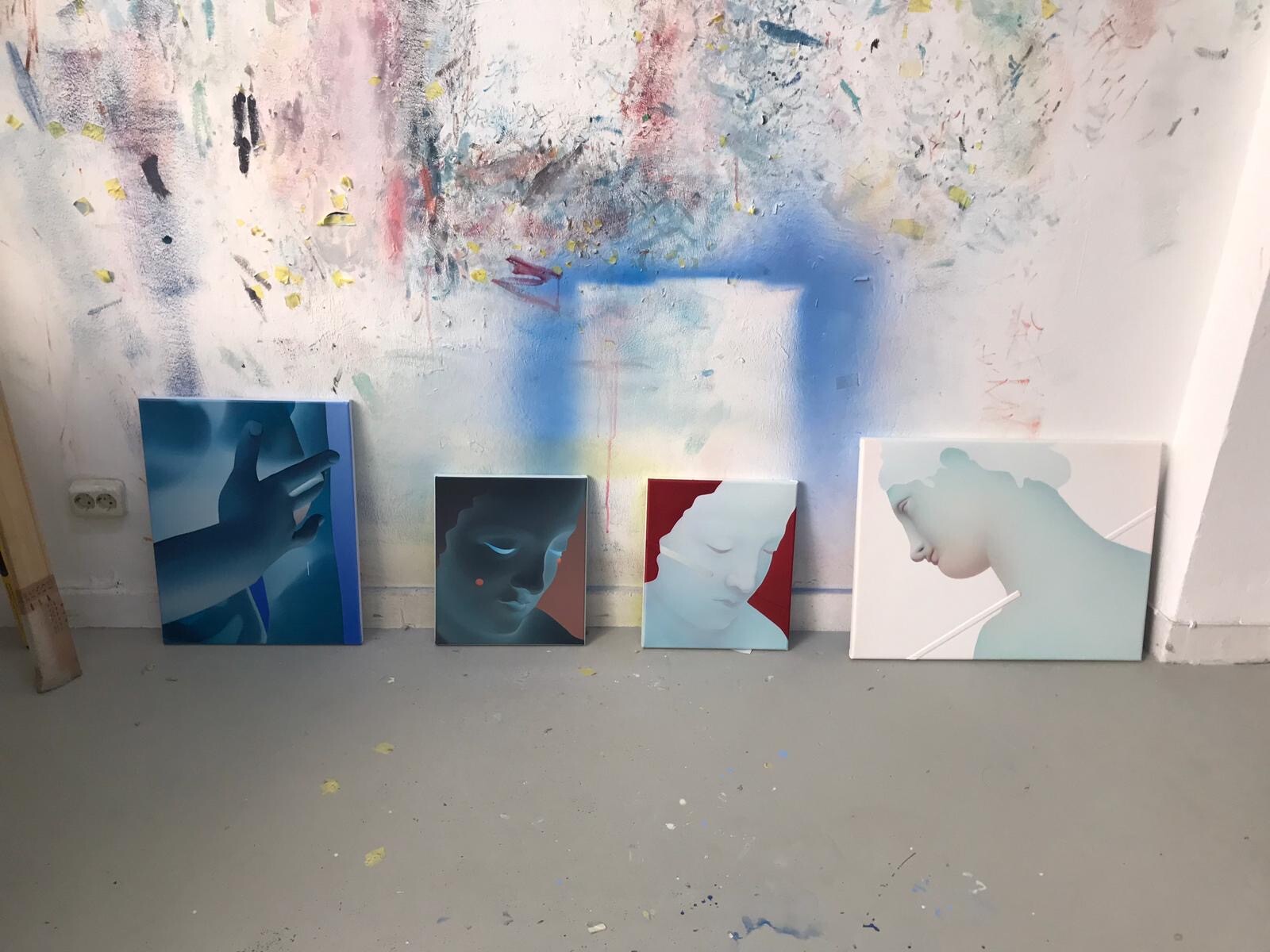
Vivian Greven Studio Insights
Vivian Greven, born 1985 in Germany is represented in internationally renowned museum collections such as the Kunstmuseum Stuttgart. Her works are currently part of the exhibition “Jetzt! Junge Malerei in Deutschland” at the Kunstmuseum Bonn, the Kunstsammlung Chemnitz – Museum Gunzenhauer, the Museum Wiesbaden, Deichtorhallen Hamburg and „Something Between US“ at Kai10 Düsseldorf and up-coming Kunsthalle Nürnberg in 2021. Further up-coming exhibitions are her solo show at Kunstpalais Erlangen and group exhibitions at Paula Modersohn Becker Museum Bremen or Gallery Vacancy Shanghai.
